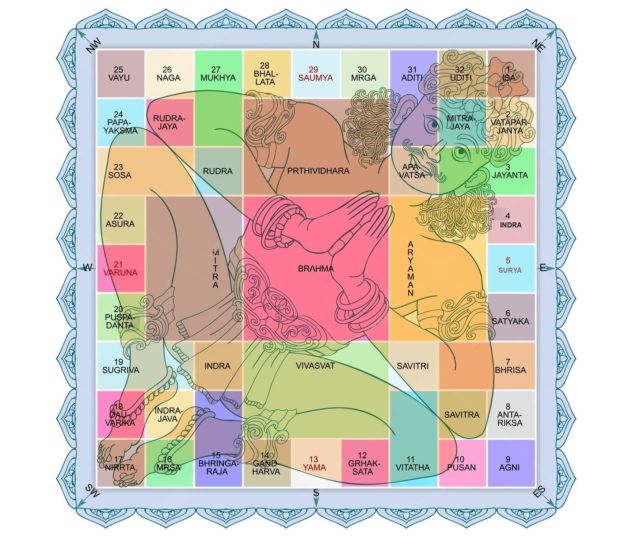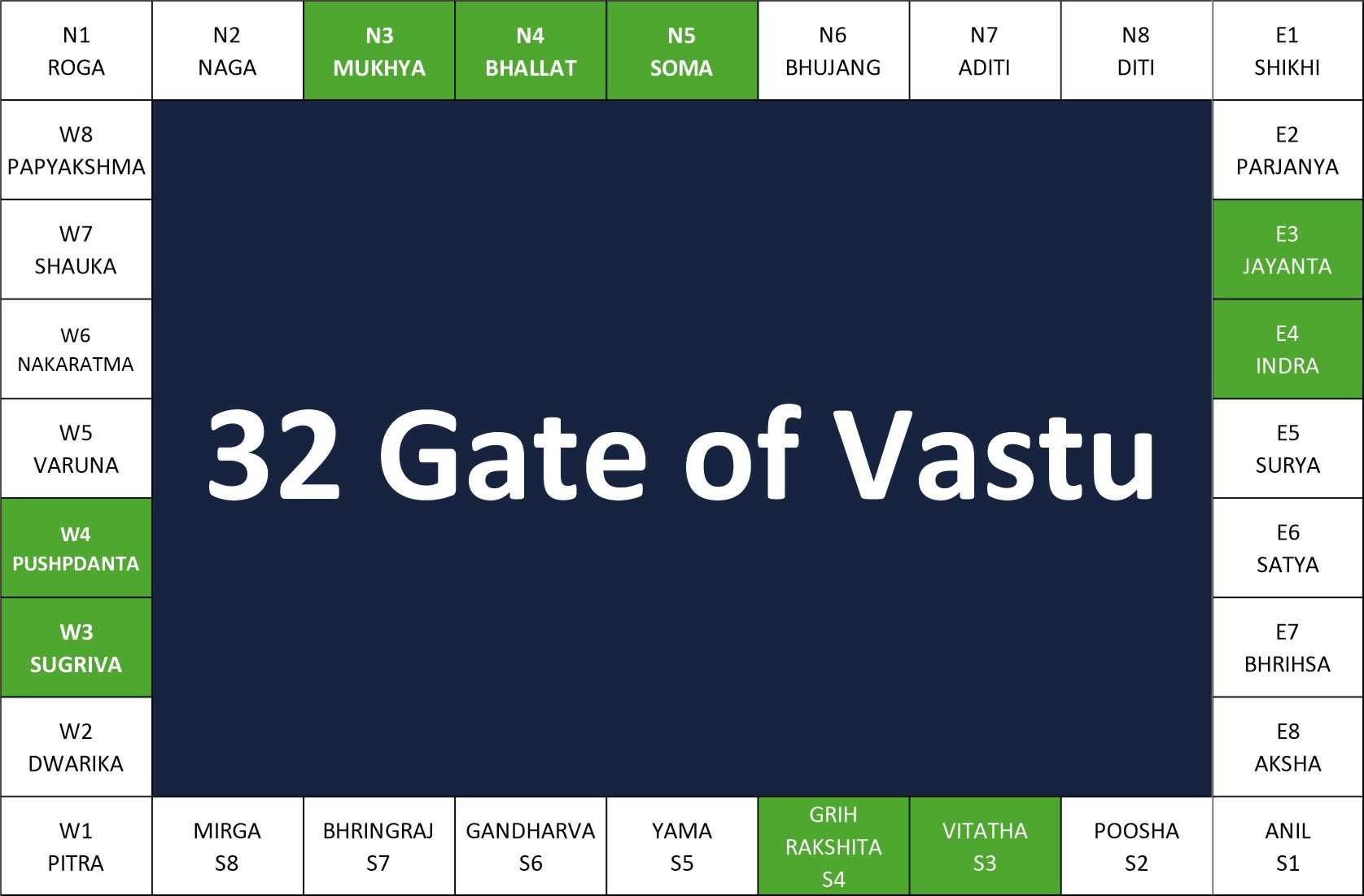Vaastu Devta
Devta Vaastu

What Is the Vastu Purusha Mandala (Devta Grid)?
- The Vastu Purusha Mandala is a metaphysical blueprint—a square grid (commonly 9×9 = 81 padas or sometimes 8×8 = 64 padas)—depicting a cosmic being, the Vastu Purusha, pinned face-down by deities to stabilize the world .
- At its center lies the Brahmasthan, occupied by Brahma, representing the pure creative energy and the spiritual core of the structure
- The remaining 44 Devtas (making 45 including Brahma) are distributed across the grid, each associated with specific directions, energies, and life aspects—forming the Devta Grid or Devta Mandal
Key Components of the Devta Grid
-
1. Central Energy Field – Brahma (Brahmasthan)
- Brahma occupies the center, often covering multiple padas, symbolizing the nucleus of energy, creation, and balance
-
2. Inner Energy Fields (Deva Vithi)
- Bhudhar – Manifestation power
- Aryama – Connection and social harmony
- Vivasvan – Success and fame
- Mitra – Motivation and action
-
3. Diagonal Energy Zones (Manushya Vithi)
- Eight deities located along the diagonals, including:
Savita and Savitur – Energies to initiate and sustain action
-
4. Outer Zone (Paishacha Vithi)
- The peripheral squares hold 32 Devtas, aligning with entrances and boundary energy:
Examples (North East): Aditi (security), Diti (vision), Shikhi (ideas), Parjanya (rain/fertility)
South East: Brisha (friction), Akash (space), Anila (air), Pusha (nourishment)
South West: Bhringraj (nutrition), Mrigah (skills), Pitra (ancestors), Dauwarik (Nandi) (knowledge)
Directional Devtas — The 8 Cardinal Directions
-
1. Central Energy Field – Brahma (Brahmasthan)
- Brahma occupies the center, often covering multiple padas, symbolizing the nucleus of energy, creation, and balance
-
In simplified terms, key Devtas oversee the eight main directions:
| Direction | Devta | Meaning / Energy |
|---|---|---|
| N–E (Ishanya) | Shiva (Ishana) | Divine energy, spirituality |
| E (Purva) | Indra | Power, fame, beginnings |
| S–E (Agneya) | Agni | Fire, transformation, vitality |
| S (Dakshin) | Yama | Discipline, endings, stability |
| S–W (Nairitya) | Nairiti / Ancestors | Protection, grounding, family strength |
| W (Paschim) | Varuna | Water, wisdom, emotional balance |
| N–W (Vayavya) | Vayu | Movement, relationships, flexibility |
| N (Uttara) | Kubera | Wealth, prosperity, opportunities |
| Center | Brahma | Universal balance, creation |
Why It Matters
-
Rooms and functions are ideally placed according to the Devtas’ attributes—for example:
- This sacred grid provides a spatial framework for construction and architecture that aligns physical spaces with cosmic energies.
- Rooms and functions are ideally placed according to the Devtas’ attributes—for example:
Puja/meditation in NE (Shiva)
Kitchen in SE (Agni)
Master bedroom/storage in SW (Nairiti/ancestors)
Office or wealth-related area in North (Kubera) - The center (Brahmasthan) must remain open and free to allow energy balance and flow

Reach Out for Personalized Vastu Consultation
Talk to our expert Vastu consultant for professional advice on homes and offices. Transform your space with positive energy








